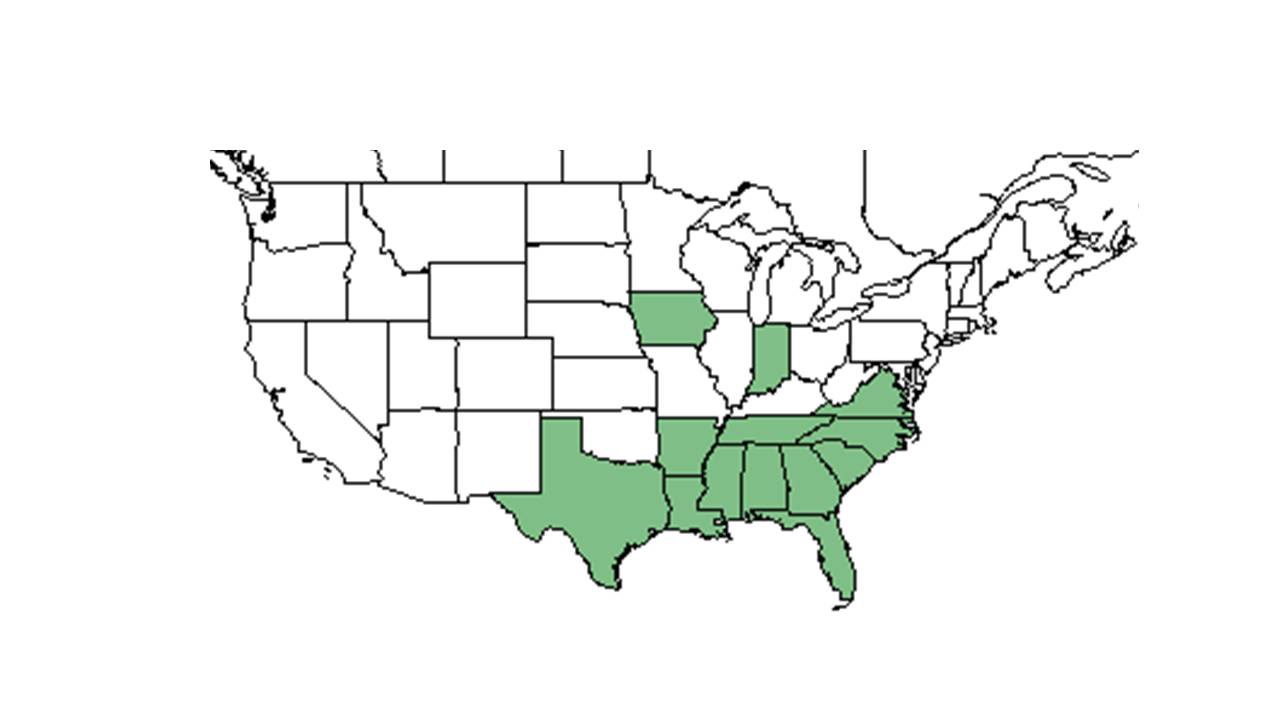Dichanthelium consanguineum
| Dichanthelium consanguineum | |
|---|---|

| |
| Scientific classification | |
| Kingdom: | Plantae |
| Division: | Magnoliophyta - Flowering plants |
| Class: | Liliopsida – Monocotyledons |
| Order: | Poales |
| Family: | Poaceae ⁄ Gramineae |
| Genus: | Dichanthelium |
| Species: | D. consanguineum |
| Binomial name | |
| Dichanthelium consanguineum (Kunth) Gould & C.A. Clark | |

| |
| Natural range of Dichanthelium consanguineum from USDA NRCS Plants Database. | |
Common names: blood panicgrass, Kunth's witchgrass
Contents
Taxonomic notes
Synonyms: Panicum consanguineum Kunth[1]
Varieties: none[1]
Description
Dichanthelium consanguineum is a perennial graminoid.
Generally, for the Dichanthelium genus, they have "spikelets usually in panicles, round or nearly so in cross section, 2-flowered, terminal fertile, basal sterile, neutral or staminate. First glume usually present, 2nd glume and sterile lemma similar; fertile lemma and palea indurate without hyaline margins. Taxonomically our most difficult and least understood genus of grasses, more than 100 species an varieties are ascribed to the Carolinas by some authors. Note general descriptions for species groups (e.g., 1-4, 5-8, 9-13, and 26-62)."[2]
Specifically, for the D. consanguineum species, they are "perennial with distinct basal rosettes; branching, when present, from nodes above basal rosette. Leaves basal and cauline, vernal and autumnal. Culms 3-5 dm tall, nodes and internodes villous. Blades to 12 cm long, 2-10 mm wide, uppermost usually more than 2 mm wide, glabrous or densely papillose-pilose on both surfaces, margins usually papillose- ciliate; sheaths appressed or spreading papillose-pilose; ligules ciliate, 1-5 mm long; autumnal blades glabrous or pilose on both surfaces, flat, to 8 cm long, 2-4.5 mm wide. Panicle 1.5-7 cm long, 1-4.5 cm broad; rachis glabrous or puberulent, branches ascending or spreading, scaberulous. Spikelets obovoid, 2.2-2.8 mm long; pedicels scaberulous. First glume usually scarious, obtuse, 0.6-1 mm long, 2nd glume and sterile lemma pubescent, acute to obtuse, usually 2.5 mm long; fertile lemma and palea 2-2.2 mm long. Grain 1.5 mm long, yellowish or purplish, broadly ellipsoid or subglobose." [2]
Distribution
Ecology
Habitat
D. consanguineum can be found mainly on dry sandy soils. It occurs in pine flatwoods, pine-cypress savannas, and mixed pine-oak forests.[3]
Dichanthelium consanguineum is an indicator species for the Upper Panhandle Savannas community type as described in Carr et al. (2010).[4]
Phenology
The primary panicles are open polllinated and produced from April to June, the secondary panicles are cleistogamous and produced from June to fall.[5]
Conservation, cultivation, and restoration
Cultural use
Photo Gallery
References and notes
- ↑ 1.0 1.1 Weakley, A.S. 2020. Flora of the Southeastern United States. Edition of 20 October 2020. University of North Carolina at Chapel Hill, Chapel Hill, North Carolina.
- ↑ 2.0 2.1 Radford, Albert E., Harry E. Ahles, and C. Ritchie Bell. Manual of the Vascular Flora of the Carolinas. 1964, 1968. The University of North Carolina Press. 142-152. Print.
- ↑ Florida State University Robert K. Godfrey Herbarium database. URL: http://herbarium.bio.fsu.edu. Last accessed: June 2014. Collectors: L. C. Anderson, Sidney McDaniel, A. H. Curtiss, and Geo V. Nash. States and Counties: Florida: Duval, Lake, Leon, Liberty, and Okaloosa
- ↑ Carr, S.C., K.M. Robertson, and R.K. Peet. 2010. A vegetation classification of fire-dependent pinelands of Florida. Castanea 75:153-189.
- ↑ [[1]]